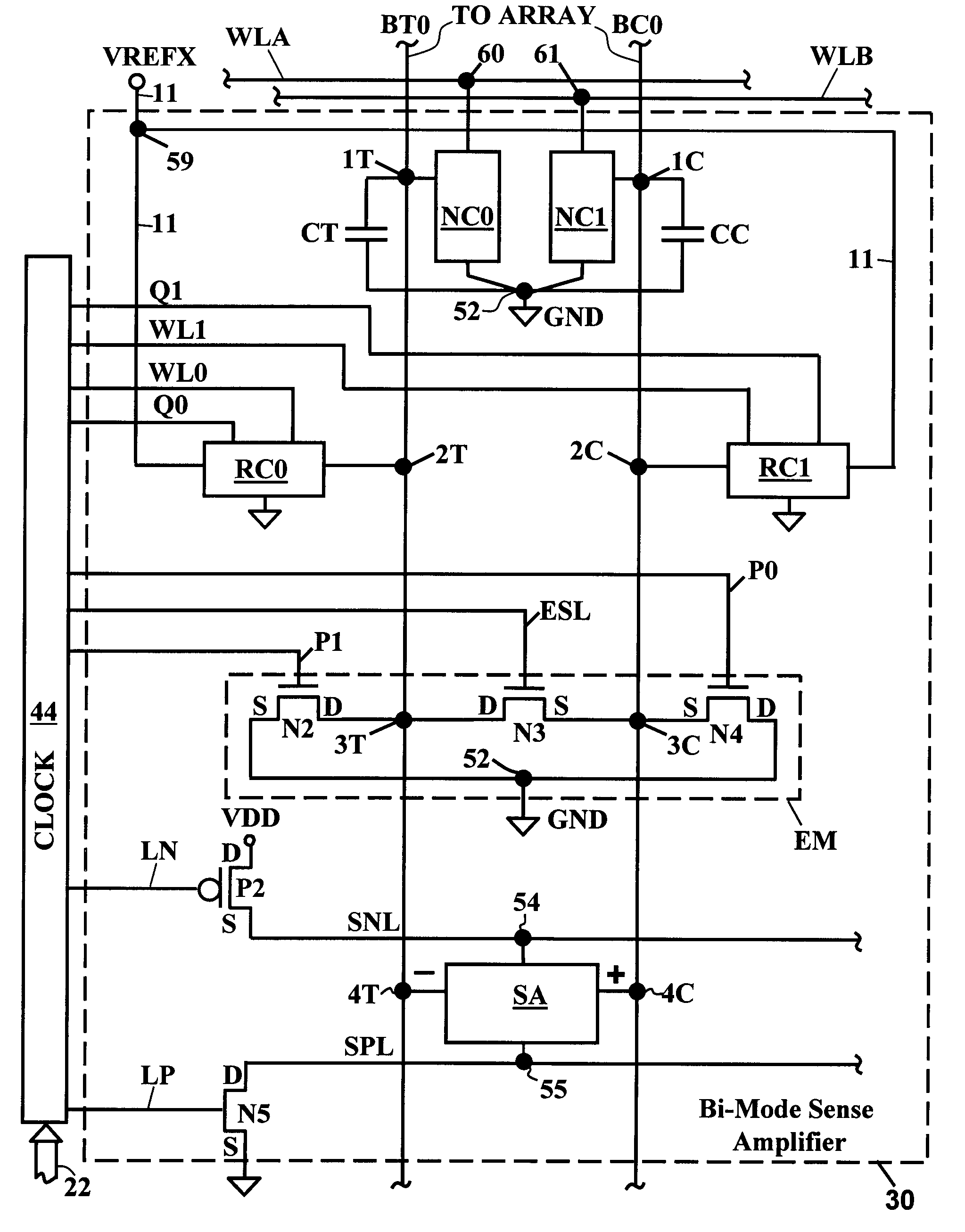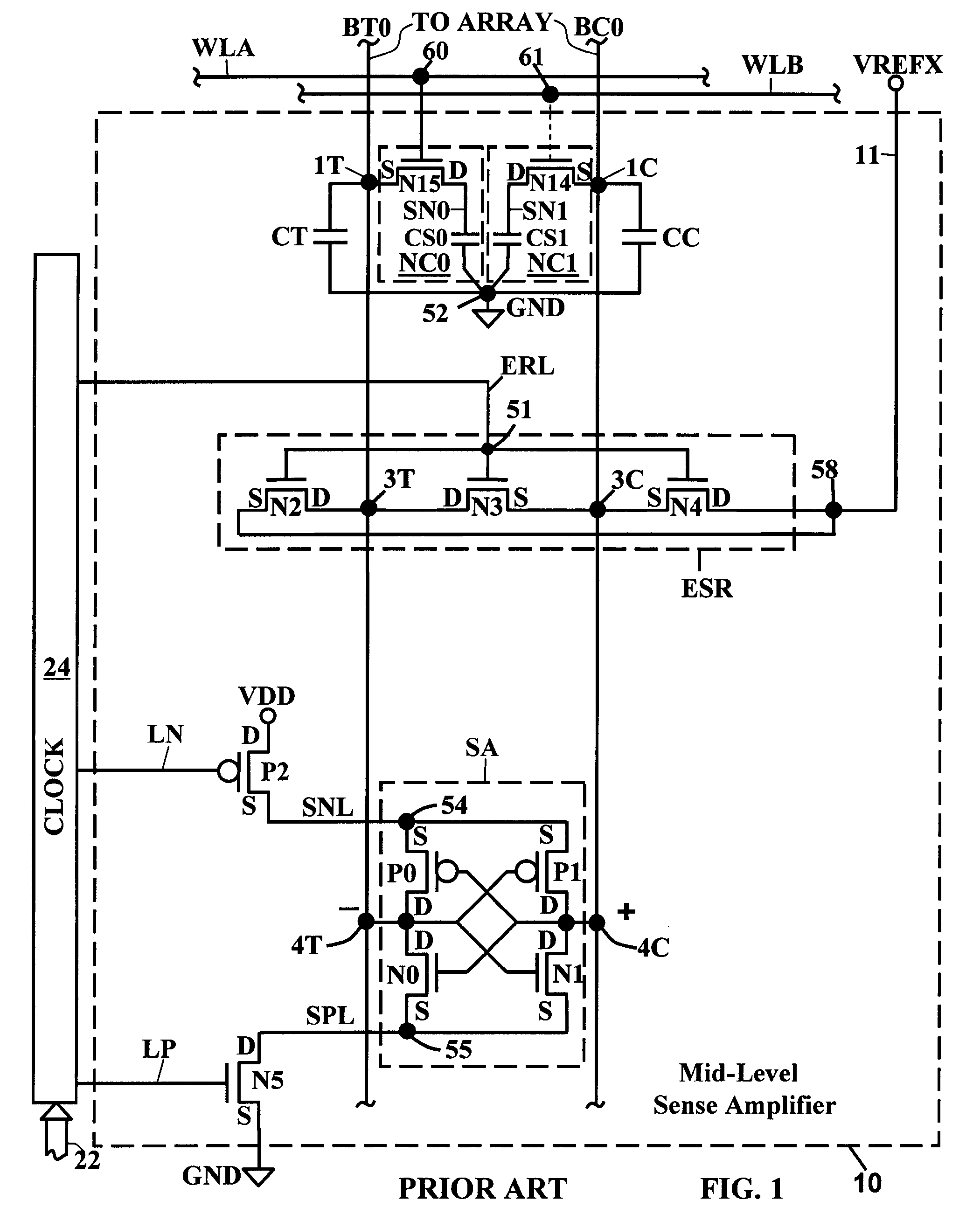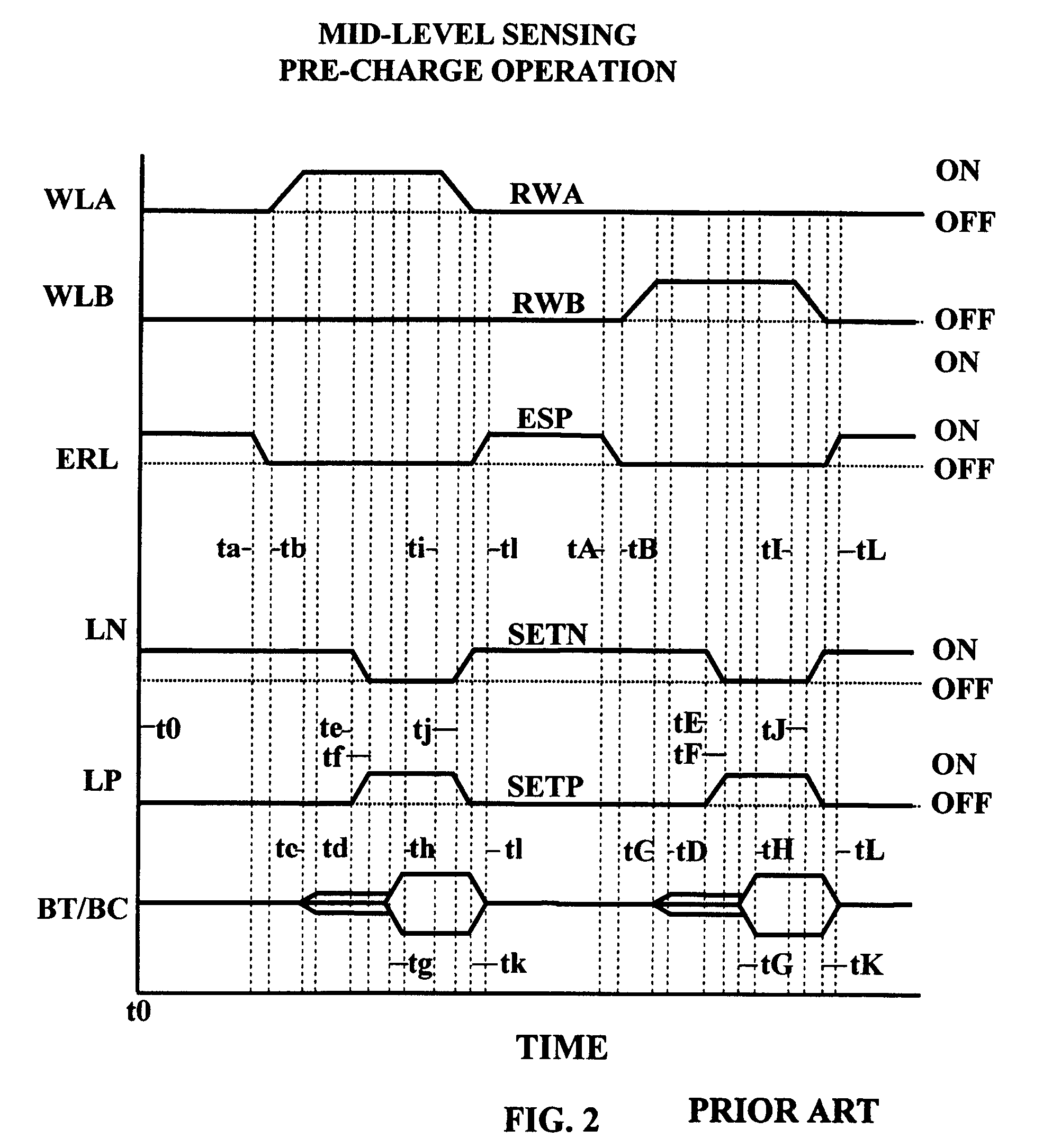Bi-mode sense amplifier with dual utilization of the reference cells and dual precharge scheme for improving data retention
a data retention function and reference cell technology, applied in the field of bimode sense amplifiers with dual utilization of reference cells and dual precharge schemes for improving data retention, can solve the problems of excessive power consumption of data retention functions, degraded precharge schemes, and excessive power required to refresh memory cells, etc., to achieve power saving, reduce array device off current, and reduce drain-source voltage vds
- Summary
- Abstract
- Description
- Claims
- Application Information
AI Technical Summary
Benefits of technology
Problems solved by technology
Method used
Image
Examples
first embodiment
[0087]FIG. 5 shows a combination of clock 44 and the bi-mode sense amplifier system 30 designed in accordance with this invention comprising a combination of features of the Mid-Level sense amplifier of FIG. 1 and the GND precharge system of FIG. 3 during the first phase of operation in which a true bitline normal cell NC0 and a complimentary bitline reference cell RC1 are activated to connect the storage capacitor CS0 to the true bitline BT0 in response to a true wordline pulse RWA on true wordline WLA. The true normal cell NC0 and the complementary normal cell NC1 are the same as in FIG. 1. The reference cell RC0 and the reference cell RC1 are the same as in FIG. 3. The reference cell RC0 and the reference cell RC0 and the reference cell RC1 are the same as in FIG. 3. The reference cell in this embodiment is used as the bitline precharge purpose.
[0088]FIG. 6A shows the signal timing diagrams of the GND precharge for the mission modes of operation of the circuit of FIG. 5. In addit...
second embodiment
[0098]FIG. 7 is the schematic diagram of a second embodiment of the present invention in which a combination of a clock 64 and a bi-mode sense amplifier system 40 includes dual precharge circuits, which is a modification of the bi-mode sense amplifier system as shown in FIG. 5. The true normal cell NC0 and the complementary normal cell NC1 are the same as in FIG. 1. Reference cell RC0 and reference cell RC1 are the same as in FIG. 3.
[0099]FIG. 7 is a schematic diagram of the combination of a clock 64 a dual precharge circuit 40 which includes a sense amplifier SA, plus thirteen other MOSFETs or two more FETs than for FIG. 5. The sense amplifier SA can be identical to the sense amplifier SA shown in FIG. 1 or can be modified to include another equivalent sense amplifier circuit.
[0100]FIG. 8 shows the signal timing diagram of wordline, equalization signal, equalization pulse, true bitline and complementary bitline potentials applied to and generated in the circuit of FIG. 7.
[0101]In F...
third embodiment
[0123]FIG. 9 is a schematic diagram of a third embodiment of the present invention in which a bi-mode sense amplifier system includes a MOSFET dual precharge circuit, which show a modification of the system as shown in FIG. 7. The true normal cell NC0 and the complementary normal cell NC1 are the same as in FIG. 1. The reference cell RC0, and the reference cell RC1 are all the same as in FIG. 3
[0124]FIG. 9 shows a modification of the circuit of FIG. 7 including a clock 84 and a system 50. System 50 includes fourteen transistors and four capacitors. The circuit inside the sense amplifier block SA can be identical to the sense amplifier SA shown in FIG. 1 or can be modified to include another equivalent sense amplifier circuit. Instead of the three equalization NFETs N2, N3 and N4 of the VREFX reference potential equalization circuit ESR in FIG. 7 that are tied to operate in response to the equalization signal on line EQS, in FIG. 8 there is a shorting equalization circuit ES which in...
PUM
 Login to View More
Login to View More Abstract
Description
Claims
Application Information
 Login to View More
Login to View More - R&D
- Intellectual Property
- Life Sciences
- Materials
- Tech Scout
- Unparalleled Data Quality
- Higher Quality Content
- 60% Fewer Hallucinations
Browse by: Latest US Patents, China's latest patents, Technical Efficacy Thesaurus, Application Domain, Technology Topic, Popular Technical Reports.
© 2025 PatSnap. All rights reserved.Legal|Privacy policy|Modern Slavery Act Transparency Statement|Sitemap|About US| Contact US: help@patsnap.com



